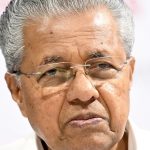
India Cuts Off Water Flow to Pakistan from Chenab Dam
In a bold move signaling a shift in strategic posture, India has stopped the flow of water from the Baglihar Dam on the Chenab River into Pakistan. The decision comes shortly after India suspended the Indus Waters Treaty in response to the Pahalgam terror attack, in which 26 Indian civilians were killed. The attack, widely attributed to Pakistan-based terror groups, has triggered a series of diplomatic and infrastructural retaliations from India.
The National Hydroelectric Power Corporation (NHPC), which manages the Baglihar project, initiated de-silting operations that involved closing the dam’s sluice gates. This action drastically reduced water discharge to Pakistan by as much as 90%. Similar steps are also being considered at the Kishanganga Dam on the Jhelum River.
Strategic Implications for the Region
This move is part of a broader framework of punitive measures that India is undertaking to assert pressure on Pakistan. The Indus Waters Treaty, which has governed water sharing between the two nations for over six decades, had granted Pakistan exclusive rights over the Chenab, Jhelum, and Indus rivers, while India retained control over the Ravi, Beas, and Sutlej. By suspending water release from Chenab, India has challenged the foundational premise of the treaty and escalated the geopolitical stakes.
Pakistan has in the past warned that any blockage of water flow from India would be viewed as an act of hostility. With water scarcity already a critical issue in Pakistan, particularly for agriculture and power generation, India’s action could have significant downstream effects on the country’s economy and domestic stability.
India’s Hydropower Projects Gain Momentum
India is also accelerating the development of hydropower infrastructure on western rivers. Major projects such as Pakal Dul (1,000 MW), Kiru (624 MW), Kwar (540 MW), and Ratle (850 MW) are in advanced stages of construction along the Chenab basin and are expected to be operational between 2027 and 2028. These efforts are not only aimed at boosting India’s renewable energy capacity but also at asserting greater control over strategic water resources.
The decision to cut off water flow is seen as both a tactical message and a long-term shift in India’s water diplomacy — one that intertwines national security, infrastructure policy, and regional leverage.


















